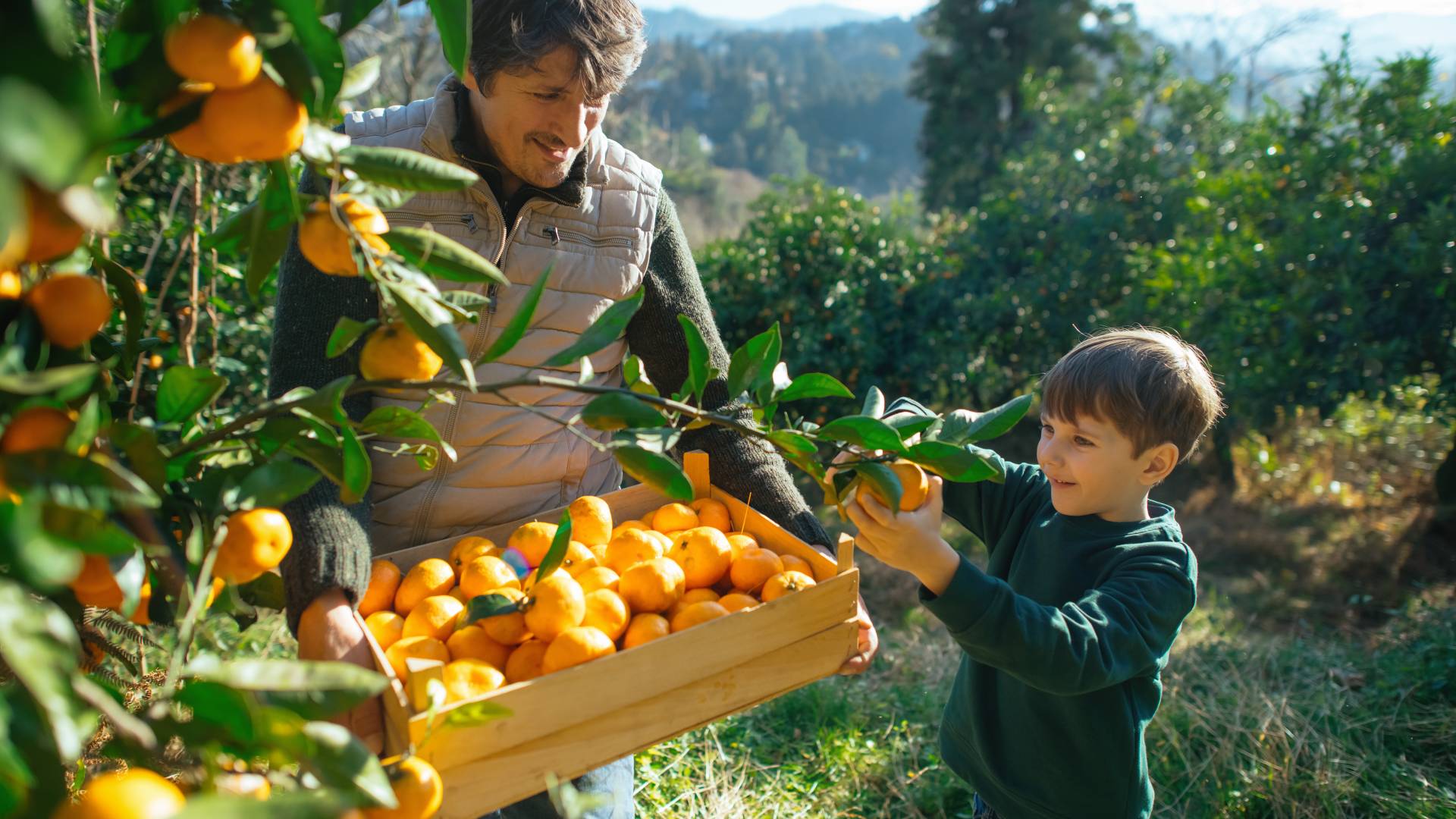Nonprofit Is Now Giving Grants to Farmers and Ranchers Who Are Encountering Challenges and Would Like to Transition From Animal Agriculture to Profitable Specialty Crops

WASHINGTON—A national nonprofit organization is now offering a second round of Convert to Crops grants of $15,000 each to assist farmers and ranchers who are encountering challenges with animal agriculture and would like to transition to profitable specialty crops. Growing greens, beans, fruits, veggies, mushrooms, or nuts could provide sufficient income and allow farming families to stay on the land. The grants are administered by the Physicians Committee, a nonprofit public health advocacy organization with 17,000 doctor members nationwide.
To apply for a Convert to Crops grant, farmers should email the answers to the below questions to Jeanne McVey, jeannem [at] pcrm.org.
- Where is your farm located—county and state?
- Please describe your present farming operation. For example, it’s a cattle ranch or dairy farm and you are encountering financial or other challenges. Or you have inherited a farm and you’d like to phase out animal agriculture to focus on fruits, veggies, beans, mushrooms, or nuts.
- Are you planning to start or continue to phase out animal agriculture and instead grow specialty crops that you believe will be profitable? For example, you are repurposing a former poultry barn to grow hydroponic veggies like Riley Creek Farms in Alabama. Or you are a beef-and-vegetables producer and you’d like to become a vegetables-only grower like Mike Lanigan, a third-generation cattle rancher.
Launched in November 2024, the Physicians Committee’s Convert to Crops program is modeled on a program established by lawmakers in Vermont who provided grants to farmers who wished to diversify or transition from one type of farming to another.
Our most recent grant recipient is the Whitcomb family farm in Vermont, which was featured in the Burlington Free Press. The Whitcombs have phased out the dairy operation, but the sixth and seventh generation farmers are finding success growing crops including pumpkins, butternut squash, apples, corn, and Christmas trees. A pumpkin grown on the Whitcomb family farm recently won first place for weight at the Champlain Valley Fair. The prize pumpkin weighed 140 pounds!
One Convert to Crops grant recipient is a former poultry farmer in Alabama who is now growing hydroponic leafy greens in a retrofitted chicken barn, as reported by the Dothan Eagle, Farms, AgFarmNews, WTVY-TV, and other news outlets. The farmer has purchased a refrigerated trailer to deliver fresh veggies to local grocery stores, farmers markets, and schools. He is also expanding his indoor hydroponic farm with Dutch buckets for growing cucumbers and tomatoes. There are plans to expand the peach orchard.
As reported by the Omaha World Herald, Nebraska Public Media, KOLN-TV, and many other news outlets, the Physicians Committee has given a farm transition grant to a fourth-generation Nebraska farmer who is rewilding her family’s former cattle ranch. Since the farm borders the Middle Loup River, and flooding is a concern, she is stabilizing the riverbanks with native plants including buffalo berries, raspberries, and elderberries. The riparian berry thickets will provide food and cover to birds, butterflies, and other wildlife.
As part of a growing trend, numerous farm transitions are currently underway. In Iowa, the Faaborg brothers are transitioning the family farm from raising hogs to growing mushrooms, as reported by the New York Times. The Faaborgs are partnering with the Transfarmation Project, which provides Farmer Resources, the Farmer Toolkit, and other assistance. The farm transitions project of the national nonprofit Animal Outlook also provides in-depth expertise to farmers.
The life of a contract chicken grower can be challenging, and some of them are repurposing their chicken barns to grow veggies or retrofitting shipping containers to grow mushrooms. Former contract poultry farmer Craig Watts now works with the Socially Responsible Agriculture Project, and he advises other contract chicken growers who wish to exit the business.
Due to economic hardship or other factors, many dairy farmers are choosing to exit the business. Lancaster Farming reports that New Jersey farmer Ed Clerico is planting hazelnut trees on the 38-acre former dairy farm where he grew up. In Wisconsin, Greg Zwald embraced the life of a dairy farmer, but things changed and he now runs a pick-your-own-berries enterprise. Farm Progress reports that Carl Taber, a former dairy farmer, is now focusing on field crops, including chickpeas.
“Blueberries, beans, greens, and other plant-based foods grown by U.S. farmers can help people improve heart health, prevent diabetes, and maintain a healthy weight, among other benefits,” says Roxanne Becker, MBChB, a medical doctor on the staff of Physicians Committee. “It’s important to support these cherished family farms.”
These farm transitions aren’t easy and in addition to grants provided by nonprofit groups like Physicians Committee, the government should provide financial and technical support. U.S. Sen. Cory Booker favors a voluntary program that would require the U.S. Department of Agriculture to provide grants to livestock farmers to pay off related debt and to transition the property to alternative agriculture activities. All senators should stand with Sen. Booker to support farmers.
If dairy farms are being phased out and milk production declines, what are your alternative sources of calcium? In the U.S., farmers grow many sources of calcium including almonds, sweet potatoes, and kale. Health-conscious consumers often reach for plant milk, and there are many varieties including hazelnut milk which is creamy and delightful according to Bon Appetit.
Farmers also grow sources of healthful plant-based protein including chickpeas, lentils, black beans, nuts, and mushrooms. A study published in the journal Current Nutrition Reports, finds that mushroom protein is of high quality in terms of complete essential amino acids. For farmers, mushrooms can produce high yields in a short amount of time, and for home cooks, they are an affordable source of high-quality protein.
If farmers increase acreage of fruit and nut trees, improved water quality is one of the many benefits. One way to keep phosphorous and other pollutants from flowing into rivers is to install riparian buffers of trees and shrubs to intercept polluted water running off of fields where chicken litter has been applied. Trees that are suitable for riparian buffers, like hazelnuts, can also provide income to the farmer, according to the U.S. Department of Agriculture.
Hazelnuts and other commercially grown trees benefit our environment by producing oxygen for us to breathe while storing carbon dioxide in their fibers. Trees can also mitigate flooding from heavy rains while stabilizing riverbanks. A recently installed flood-control project in Nashville features a grove of serviceberry trees, which provide food to people and wildlife.
Native pecan trees can provide a good income to farmers in the U.S., and because they are flood-tolerant, farmers can grow them in river bottomlands. During heavy rains, land that is compacted by livestock hooves can cause runoff to gain speed as it rushes down to overwhelm rivers, streams, and roadways. By contrast, trees can help tame floodwaters by reducing the speed and volume of runoff flowing towards low-lying areas.
Media Contact
Jeanne Stuart McVey
202-527-7316
jmcvey[at]pcrm.org
Founded in 1985, the Physicians Committee for Responsible Medicine is a nonprofit organization that promotes preventive medicine, conducts clinical research, and encourages higher standards for ethics and effectiveness in education and research.







